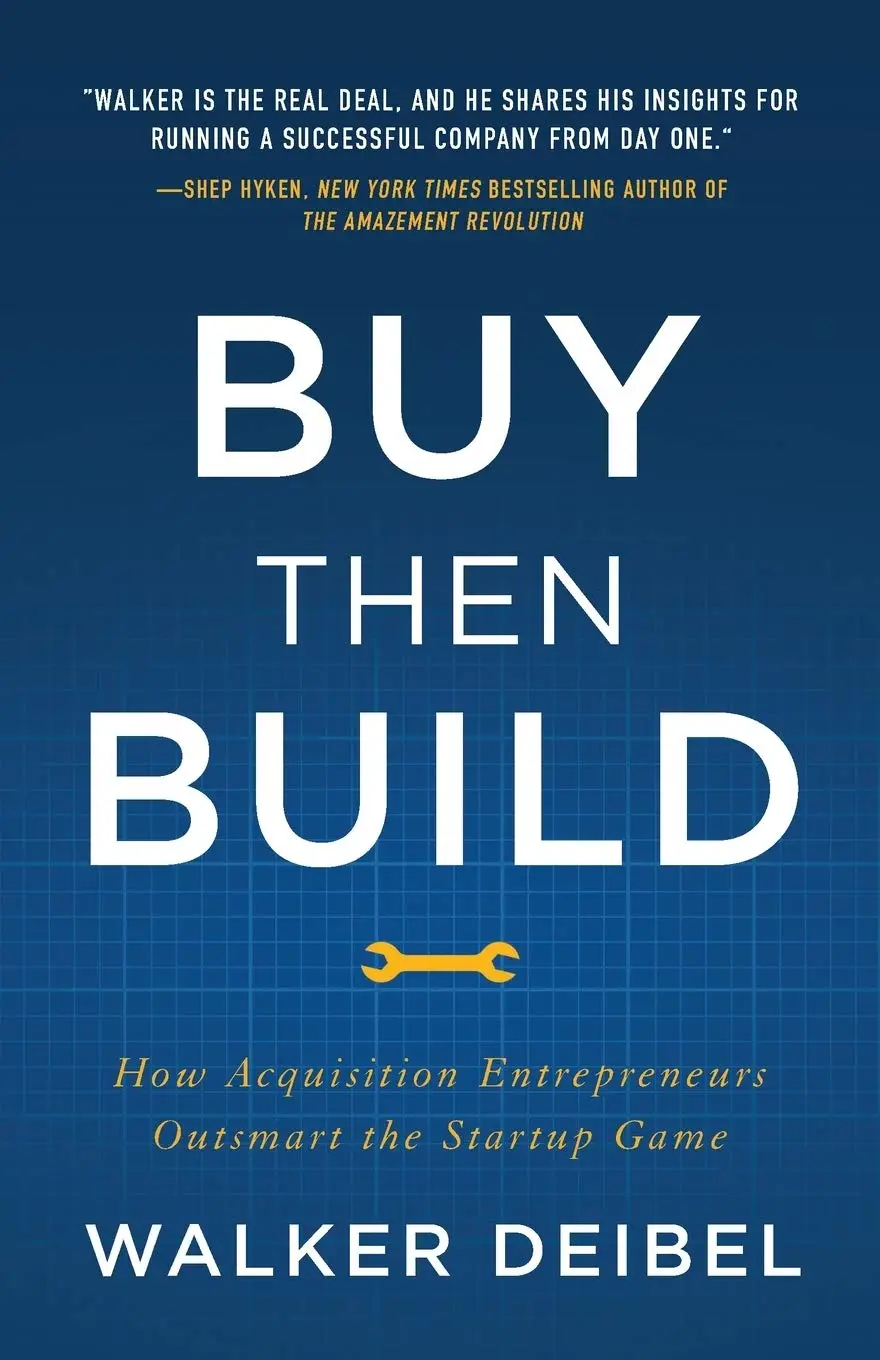Buy Then Build: How Acquisition Entrepreneurs Outsmart the Startup Game by Walker Deibel focuses on the idea of an acquisition entrepreneur. It took me far too long to read this book as I was only reading it during my coffee breaks sporadically. It’s well known that most businesses fail and startup’s fail at much higher rates than usual businesses. Entrepreneurship is gaining momentum every year and the usual method is so start at the bottom and work up. What if you didn’t have to do that? What if you could just buy an established company and keep it going?
The premise of this book is simple. You should look to buy a company and then build it up further. Instead of starting at the bottom with a startup and all of the trials and tribulations that comes with that. You look to find companies to acquire were you see you can add value. Buy Then Build is broken into four parts. Opportunity, Evaluation, Analysis and Execution. Deibel has done a great job of taking the reader through the entire process of acquiring a business.
In the first section, he outlines the idea of acquisition entrepreneurship. There are millions of businesses available in the right conditions and instead of going out on your own to start a new one, why not acquire an existing, profitable business. As more boomers are looking to retire there are trillions of dollars worth of businesses that will need new stewardship, direction and growth strategies. You should be looking at businesses that might not be in your current area of expertise that you can add true value and grow.
The second section outlines the evaluation process when looking for a new business. This includes getting into the mindset of being the CEO of a new business. If this was your business, what would you do? How would you add value? He then outlines how you should define your search parameters and how you approach brokers that can assist in your search. Having a clear outline of what you want, your budget and goals is a great way to show that you’re a serious buyer.
The third section goes into the analysis of a business. The various aspects that you should take into account when evaluating a potential acquisition. Throughout the book, Deibel uses example businesses and actual numbers. This really helped to understand how a deal would work. This section also focuses on understanding the sellers’ side of the deal. What their motivations, concerns and overall goals for the sale.
The last section outlines the actual deal. How you go about making an offer, the actual acquisition phase and finally the sale and hand over. It goes into detail about the first 90 days after the sale providing examples of what Deibel has done throughout his various acquisitions. Such as meeting staff, outlining your goals for the company and where you’re going to grow the business. Staff want to know that their jobs are safe and if there will be any major restructures.
Thoughts on Buy Then Build
The overall theme of Buy Then Build is a great way to get a step up in the success of your business career. The book was heavily focused on the American market. Tt times this led me to brush over some of the examples in the book. As I’m not US-based, I don’t have the ability to utilise some of the tools outlined.
The biggest piece to the acquisition strategy relies heavily on the use of SBA loans. With as little as 10% down you can acquire business on a relatively safe 10-year business loan. So long as you can service the loan with the existing SDE and grow the business, then it’s an ideal way to get started with a business.
The constant use of the SBA was a bit off-putting as someone that’s not based in the US or has access to relatively easy funds. I’m mainly focused on 100% online businesses I also found myself losing interest as almost all the examples were related to physical businesses. There were discussions about relocations, large staff costs and historical processes. Some of this applies to online businesses but a lot wasn’t relevant to my particular circumstances.
The one big takeaway from this book was the example at the end of the book that talks about hiring sales reps to increase your overall turnover by $4 million dollars and how that could take multiple years to get to that stage. Instead, look at acquiring another business within your field that is doing that amount of revenue. With the calculations outlined it would work to about $180,000 down to purchase the business. About the same amount as the salary for one of those staff.
This example is something that I could apply in the online world. If I’m looking to expand and need talent and customers, I should look to buy them ‘off-the-shelf’ instead. We see this a lot in the tech world and it usually referred to as talent acquisition, but you could also look at it as customer acquisition.
If you’re looking to transition out of an existing role or have the money you can put towards acquiring a business. You have the skills to help grow the business but isn’t something you’ve ever done before. Then I think Buy Then Build is worth the read.
